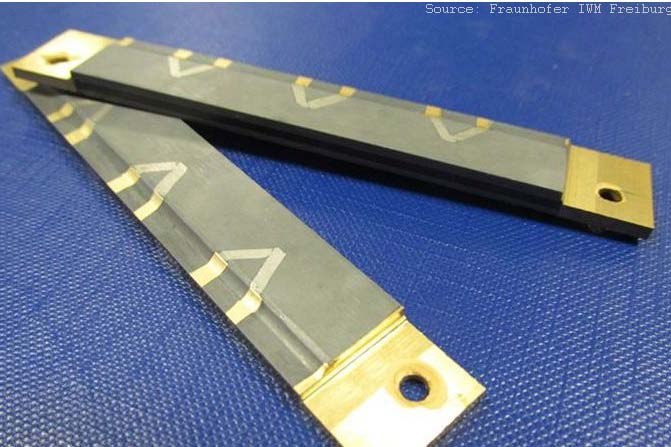HePhaiStOs

Some 90% of all packaging is manufactured using a heat contact method. Due to ongoing developments in materials and processes (e.g. thinner packaging materials, higher machine speeds, frequent product changes with adjustments and start-up processes), there are ever growing requirements on thermal joining processes. Up until now Inline process monitoring, which would save money and time and significantly improve processing reliability and product quality, has not been the norm for heat sealing processes.
The objective of this research project is to use temperature measuring technology for inline monitoring and process control of the seam quality. The design of the measuring system is being aided by numerical simulation.
The Fraunhofer IVV Dresden is using sensitive and rapid temperature measurement to record and evaluate interferences such as wrinkles and contaminants. The thin film temperature sensors, based on the Seebeck effect, and the insulating and protective layers are being developed by the Fraunhofer IWM in Freiburg. Faulty products in the process can then be identified and can be immediately rejected. Similarly, the localization of layer steps is possible. Reliable temperature measurement using this technology also creates the ability to promptly respond to increased or decreased heat requirements in the seam region, for example in the event of fluctuating machine speeds or if there are layer steps. In order to be able to use commercially available ceramic heaters, the goal is for spatially resolved measurement of the sealing zone temperature with an accuracy of +/- 1 K and response times of < 1/10 s.
A prototype unit will be built comprising two sealing bars, each with eight measuring points. Validation of the functionality and detection limits will be carried out based on representative process scenarios.
The anti-adhesive and protective layers which are being developed can also be used in conventional sealing bars and other tools such as preheating plates for thermoforming. The thin film technology can also be utilized for temperature measurement and control for injection molding and hot embossing and for recording other physical parameters. For instance, one use could be for integrated capacitive measurement of the sealing bar movement.
The final reports are available from the Industrievereinigung für Lebensmitteltechnologie und Verpackung e. V. - IVLV.
Further Project Information
| Project term: | 2016 to 2018 |
| Project management /project funding: |
Federation of Industrial Research Associations AiF (through Industrievereinigung für Lebensmitteltechnologie und Verpackung e. V. - IVLV) /Federal Ministry for Economic Affairs and Energy BMWi |
 Fraunhofer Institute for Process Engineering and Packaging IVV
Fraunhofer Institute for Process Engineering and Packaging IVV